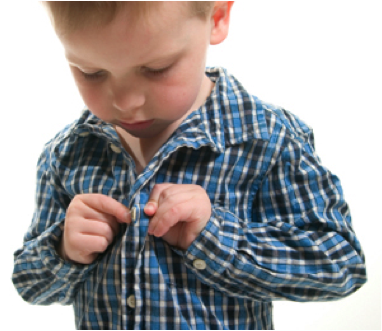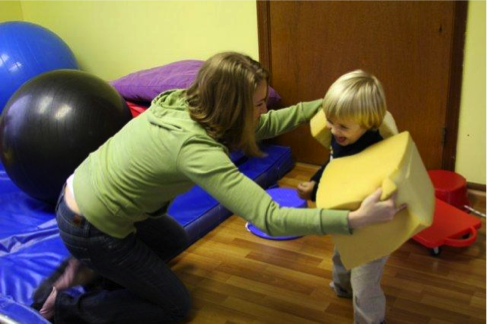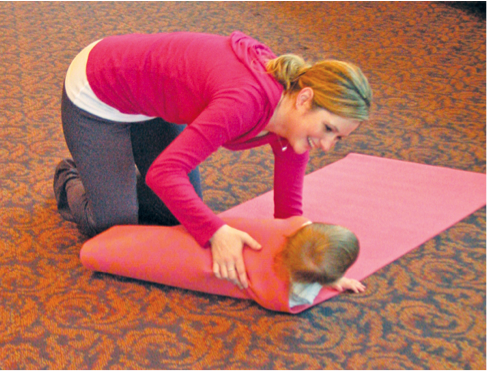Occupational Therapy & Yoga Therapy for kids! http://mindfulmovement.info
Don't wanna be here? Send us removal request.
Link
2 notes
·
View notes
Link
The so-called trust hormone, oxytocin, may not improve the symptoms of children with autism, a new study has found. In a randomized controlled clinical trial of 38 boys with autism, half were given a nasal spray of oxytocin on four consecutive days. Compared to a placebo, oxytocin did not significantly improve emotion recognition, social interaction skills, repetitive behaviors, or general behavioral adjustment.
2 notes
·
View notes
Photo

Across Generations: Older Fathers May Transmit Autism Risk To Their Grandkids Alice G. Walton, forbes.com
In the ever-complicating discussion of how developmental disorders like autism develop, new studies continue to throw new variables into the mix. It’s pretty well thought that autism develops from a combination of genetic and…
Older fathers may transmit autism risk to grand kids..
2 notes
·
View notes
Photo

Autism Prevalence Is Now At 1 In 50 Children Emily Willingham, forbes.com
The US Centers for Disease Control and Prevention (CDC) has released new figures for autism prevalence in the United States. They now give a prevalence of 1 in 50, but this story, like most autism-related stories, goes deeper than the…
Autism Prevalence is now at 1/50 children
0 notes
Link
Heidi, pediastaff.com
[Source: NCLD.org] Editor’s Note: While written for parents/guardians, this article is definitely worth sharing and reading by therapists as well. Does your young child have poor motor skills, even when doing something as simple as brushing teeth?…
0 notes
Photo

blog| legs up the wall - blog lululemon ambassador - David Good, lululemon.com
Our Toronto ambassador David Good wants you to stop what you're doing and put your legs up the wall. Read on to find out why he's so passionate about this restorative yoga pose, and then find a w …
Legs up the wall! If you don't have time for yoga take the time for just this one pose...
0 notes
Photo

How to Practice Downward Facing Dog Correctly #DailyCupofYoga, dailycupofyoga.com
One of the most foundational poses to any yoga practice is Downward Facing Dog, or Adho Mukha Svanasana. This posture not only relieves lower back pain and sciatic nerve discomfort, but also helps to minimize depression and tightness in the…
0 notes
Link
nasponline.org
Coping with Crisis—Helping Children With Special Needs
Tips for School Personnel and Parents
National Association of School Psychologists
When a crisis event occursin school, in the community or at the national levelit c…
Coping with crisis in school
0 notes
Photo

10 Activities to Improve Your Toddler's Development Amanda Lehrman, parents.com
3 notes
·
View notes
Photo

Like Mindful Movement on Facebook!!! (Taken with Instagram at Mindful Movement)
0 notes
Link
0 notes
Photo

Which sensory systems are your favorite Olympians using?
4 notes
·
View notes
Text
Sensory Processing Disorder and Sports
Children with Sensory Processing Disorder (SPD) may present with individual characteristics that can affect their fit with certain sports. Some aspects of a sport may make it a great match: for example, joining the track team for a child who seeks vestibular input. Other sports may be less suitable. Take the child who is unable to sustain their vision on a focal point and experiences visual sensitivity. Sports like baseball, demanding the players keep their eye on the ball, may be more of a challenge.

Factors to consider when choosing a sport:
1. Child's Strengths and Weaknesses:
Motor coordination and praxis level: This can change within a sport as well. A dog paddle requires low coordination in comparison to the skillful motor planning of the breaststroke.
Muscle tone: Children with SPD often have lower muscle tone than children without SPD. This can translate to more energy being used for the child with SPD during certain quick actions, such as the stopping and turning in basketball or soccer.
On the other hand, when swinging a golf club back and forth before the hit and bouncing the ball in tennis to prepare a serve, more time is allowed for muscle fibers to be recruited, which means less energy is expended to recruit them.
2. Stimuli of Sport Environment:
Each sport has a unique sensory profile that should be considered when a child with SPD participates. Is there constant whistle-blowing? This could be over-stimulating to the auditory-sensitive child. Swimming could be an excellent fit for a child who seeks proprioceptive feedback. Read the Sport Sensory Characteristics list at the end of this handout.
3. Energy Requirements:
Lower energy sports: bowling, fishing, hiking, recreational cycling, baseball, martial arts, horseback riding, golf, yoga, table tennis
Higher energy sports: basketball, track and field, cheerleading, cross country, dance, rock climbing, lacrosse, soccer, tennis, skiing, BMX bike racing, hockey, mountain biking
4. Dynamic vs. Static:
More static: bowling, diving, hiking, archery, trampoline, yoga, martial arts, track and field, rock climbing
Less dynamic: skiing, skating, fencing, volleyball, cycling, wrestling, racquet sports, horseback riding, baseball
More dynamic: dance, field hockey, football, lacrosse, soccer, basketball, ultimate Frisbee
Fortunately, bringing the subject to light doesn’t mean limitations must remain in place. Awareness is a step toward managing a child’s sensory processing issues so they’re able to participate in what they want!

3 notes
·
View notes
Link
0 notes
Text
Clothing Sensitivity & Tactile Defensiveness
Everyone’s nervous system interprets stimuli from the environment, including stimuli from sensations. Within the nervous system, tactile receptors are designed to respond to vibration, pressure, movement, temperature, and pain. When one’s tactile system is out of balance and disorganized, interpretations to any or all of these sensations can be affected.
An individual who has problems within the tactile system may present with hypersensitivity to touch (tactile defensiveness), hyposensitivity to touch, or decreased tactile discrimination.
Tactile Defensiveness
Tactile Defensiveness is oversensitivity in the sensations perceived through the skin. This leads to aversion to the feel of light touches and particular materials, which can trigger a negative, undesirable response from the individual.

Symptoms of tactile defensiveness may include sensitivity and irritation to specific materials and clothing, including:
- seams
- embroidery
- elastic
- waist bands
- certain shoes, such as strappy sandals or shoes with a backing
- bathing suits
- lace on clothing
- ruffles on clothing
- clothing tags
- hats, headbands, hair ties
- strong preference for limited types of fabrics and/ or clothes to be washed in specific laundry detergent
- the feel of carpets and bed linens, etc.

As one with tactile defensiveness learns which situations feel unpleasant, they began to anticipate them and may avoid them altogether. If confronted, they may respond negatively or show an emotional outburst. Examples of such situations may include:
- haircuts
- having hair brushed or washed
- getting nails trimmed
- having dental work
- wearing sports uniforms
- wearing tights, bathing suits
- wearing helmets for a game/ activity

Children and adolescents with tactile sensitivities may choose to withdraw from certain activities and experiences to avoid unpleasant sensory input. This means they are more likely to miss out on emotional, social, physical and cognitive opportunities and areas of growth.
An occupational therapist can help a child with tactile defensiveness by slowly and systematically introducing the stimuli perceived as noxious while in a positive environment. Additional strategies to help the child include:
- Weighted vests
- Lap weights, water-bottle or bean bag pillow
- Applying deep pressure by getting a hug or massage

- Therapy ball or pressure “squishes” (pictured above)
- Brushing Protocol
- Alternating Hand Hugs (AHHs)

- Wrapping up in a blanket or yoga mat- making a "burrito” (pictured above)
- Have the child move and dance while in a body sock
- Other proprioceptive activities that introduce tactile input and help increase body awareness
Not all strategies have the same effect on every child, so it’s important to monitor the child’s response and behaviors when each one is tried.
10 notes
·
View notes
Text
Toe-Walking: Why is it bad?
What Is Toe-Walking?
Toe-walking involves walking on the toes and ball of your foot, without bearing much weight or pressure through the heels and sole. Usually children and toddlers just learning to walk will demonstrate some toe-walking. However, it usually disappears with development and once typical walking patterns are established.


If it pervades beyond the early years, it may be due to poor positioning of the muscles of the lower leg and ankle, a neurological issue resulting in effective control and movement of muscles, or internal/structural problems with the muscles and tendons of the foot. Another cause is actually weakness in the muscles of the stomach, as it puts less demand on the abdominals and thigh muscles if a child is walking on their toes. Processing issues among other sensory systems is another possible explanation for some children who toe walk. Read on!
Why Is It an Area of Concern?
Toe-walking puts abnormal wear and tension on the muscles, tendons and ligaments of not only the lower leg and feet, but also the knees, hips and spine, affecting alignment overtime. Improper alignment may lead to pain at joints and increased risk for injuries.
Toe-walking may also be a sign of an underlying condition. It is associated with certain conditions such as Autism Spectrum Disorder, Cerebral Palsy, Muscular Dystophy, and a shortened Achilles tendon.
Sensory Processing Issues?
More recently, there has been discussion of toe-walking as a result of underdeveloped areas of vision. Particularly, the vestibulo-visual system is affected (i.e., problems in vision which affect the body system that is responsible for balance and coordination—the vestibular system--necessary for activities like walking). Why is this? Researchers believe a deficit in ambient (peripheral) vision, may play a large role because this type of vision is closely tied with balance, coordination and motions (Eiff, 2008). In other words, they both influence the other. An issue in one can lead to issues in the performance of its close counterpart.
Ambient vision is what allows us to see in 3-D. As one can imagine, a disruption in how we see and perceive the planes in which we move can cause a disruption in our actual movements through them!
How Can Occupational Therapy Help?
Gentle stretching is often effective and necessary in order to counter the tightness of the affected muscles of the legs and ankles (e.g., hamstrings, gastrocnemius, plantaris). An OT may design treatments for a child so that they are keeping their feet flat on the floor or in dorsiflexion (the opposite of the undesired toe-walking position) while participating in a game or obstacle course. Reminders of "feet flat, no toes" should continue outside of the game and at home, and should be encouraged to be used by the child's parents and teachers.
A child may be toe-walking because they lack awareness of the position of their body in space, thus needing help in areas of proprioception. Specific activities to help build awareness of their ankles and feet can help.
Picking Up Marbles Activity
Place 10 marbles on the floor next to a bucket and have a child pick up each marble, one at a time, using his or her toes, and then dropping them into the bucket. Encourage the use of all spaces between toes, not just between the big toe and second toe. Repeat on other foot.
Extra challenge: Instead of a bucket, have them place the marble into a smaller or narrower target, such one hole in an empty egg carton, or empty cardboard toilet paper roll, will encourage even greater control and stability of the muscles through the foot.
Other proprioceptive activities:
- have child dance, roll or play in a body sock, specifically doing activities with the feet and legs
- walking on texturized stepping stones or seat cushions (particularly fun in a game of Alligator, where they must only jump onto a stone/cushion and avoid the "water" a.k.a. floor)
- various animal and yoga poses, such as downward dog (shown below), which stretches the achilles tendon and plantaris in dorsiflexion position

- have child stomp, march, or tap feet to a rhythm, while feet are on a texturized mat, in sand or dirt, against resistance like rubber bands or Theraband, or while they have ankle weights on
If it’s suspected that the problem is related to the visual-vestibular system, an occupational therapist may evaluate and treat in areas of visual perception, and make a referral to a developmental optometrist alongside OT services if needed. In this case, a pair of ambient prism lens, along with vision therapy, may make a significant difference.
Casting may be appropriate for more severe or long-time toe walkers. Other services beyond OT can be explored if more invasive (i.e., surgical) correction is necessary.
References
M. Patrice Eiff. "What is the appropriate evaluation and treatment of children who are "toe walkers"?". Journal of Family Practice. . FindArticles.com. 17 Sep. 2008. http://findarticles.com/p/articles/mi_m0689/is_5_55/ai_n26877929
0 notes
